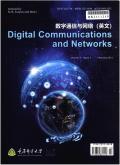MERIT: MEsh of RF sensors for Indoor Tracking
IF 7.5
引用次数: 18
Abstract
A traditional approach to indoor tracking utilizes non-RF ranging techniques, such as infrared or ultrasound. The problem with these non-RF ranging techniques is that they do not work well when the tracking devices are buried in users' wallets or bags. As a result, there has been considerable interest in using only RF techniques for indoor tracking. Existing RF-only techniques, however, typically require a costly site survey and a floor-plan. In this paper, we present the MERIT system that we designed, implemented, and evaluated. MERIT is significantly different from existing systems in that it is pure RF-based yet it does not require a site survey nor a floor-plan. MERIT tracks users to a room granularity, and it can disambiguate neighboring rooms. This disambiguation is challenging because RF signals can traverse through walls. Also, because of indoor multipath interference, it is difficult to correlate signal strength with distance. In this work, we proposed two techniques for accurate disambiguation: spatial diversity and RF reflector. In our evaluation MERIT achieved an accuracy of 98.9%. MERIT was first conceived for a telecommunication application - intelligent telephone call routing, but it can also be used for other location-aware services优点:用于室内跟踪的射频传感器网格
传统的室内跟踪方法利用非射频测距技术,如红外或超声波。这些非射频测距技术的问题是,当跟踪设备埋在用户的钱包或包里时,它们就不能很好地工作。因此,人们对仅使用射频技术进行室内跟踪非常感兴趣。然而,现有的纯射频技术通常需要昂贵的现场调查和平面图。在本文中,我们介绍了我们设计、实施和评估的MERIT系统。MERIT与现有系统有很大不同,因为它完全基于射频,但不需要现场调查或平面图。MERIT跟踪用户到房间粒度,并且可以消除相邻房间的歧义。这种消除歧义是具有挑战性的,因为射频信号可以穿过墙壁。此外,由于室内多径干扰,很难将信号强度与距离关联起来。在这项工作中,我们提出了两种精确消歧技术:空间分集和射频反射器。在我们的评估中,MERIT的准确率达到了98.9%。MERIT最初被设想用于电信应用——智能电话呼叫路由,但它也可以用于其他位置感知服务
本文章由计算机程序翻译,如有差异,请以英文原文为准。
求助全文
约1分钟内获得全文
求助全文

 求助内容:
求助内容: 应助结果提醒方式:
应助结果提醒方式:


